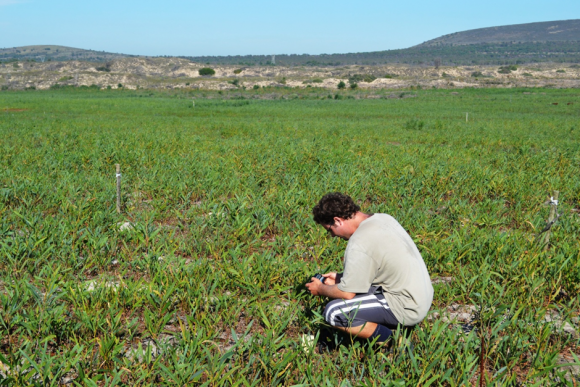In November 2016, the Centre for Invasion Biology (C·I·B) supported a workshop to help close the gap between research and management practices in the restoration of Cape Flats Sand Fynbos.
The aim of the workshop was to bring together the organisations involved in conducting research around restoration efforts following clearing of Port Jackson willow (Acacia saligna) at Blaauwberg Nature Reserve, and the managers involved in the implementation of restoration projects in City of Cape Town nature reserves.
Restoration ecology and invasion biology are synergistic fields, but often there is a gap between knowledge and practical implementation. Close collaborations between scientists and management practitioners are therefore important for bridging these gaps.
The group of 24 attendees included academics, students, conservation practitioners and consultants representing the C·I·B, City of Cape Town Nature Conservation (CCTNC), Working for Water Programme (WfW), Department of Environmental Affairs (DEA) and the Agricultural Research Council (ARC). The workshop provided a platform to discuss the research findings and to get invaluable input from experienced managers. The practicalities of costs and priorities were also addressed.

The workshop was introduced by Karen Esler (C·I·B and HOD of Department of Conservation Ecology & Entomology at Stellenbosch University), after which the background to the Blaauwberg Project was presented by Patricia Holmes (C·I·B and City of Cape Town Nature Conservation). “Active sowing after alien clearing results in better fynbos shrub recovery which can justify higher implementation costs”, according to C·I·B PhD student, Stuart Hall, who presented his study on the comparison between different clearing treatments in terms of facilitating fynbos restoration. C·I·B PhD student, Mlungele Nsikani, presented a study of the legacy effects of invasion and impact of secondary invaders, while a study by C·I·B final year student, Alicia Krupek, tested follow-up control of Port Jackson willow (Acacia saligna). The workshop concluded with a site visit to see what has been happening on the ground.
Some key themes emerged from the workshop, including: ecological thresholds and determining restoration potential, prioritizing where and how to focus clearing and restoration efforts, improving efficiency within alien clearing management, trade-offs between costs and conservation benefits of different treatments, and feasibility of scaling up different treatments from experimental plots to landscapes. Outcomes from this workshop will lead to restoration guidelines for Blaauwberg Nature Reserve and other sites requiring restoration work.
“Trade-offs need consideration; what is the optimal route for restoration outcomes and what are the costs. Getting feedback on this from WfW and managers is important” – Patricia Holmes
“We need to be able to scale up interventions, perhaps focusing on good spots to restore islands of diversity to spread into matrix” – Karen Esler
The workshop was organised by C·I·B PhD student Stuart Hall and C·I·B staff member Elrike Marais, and funding was provided by the C·I·B.
Papers from research within the Blaauwberg Restoration Project include:


